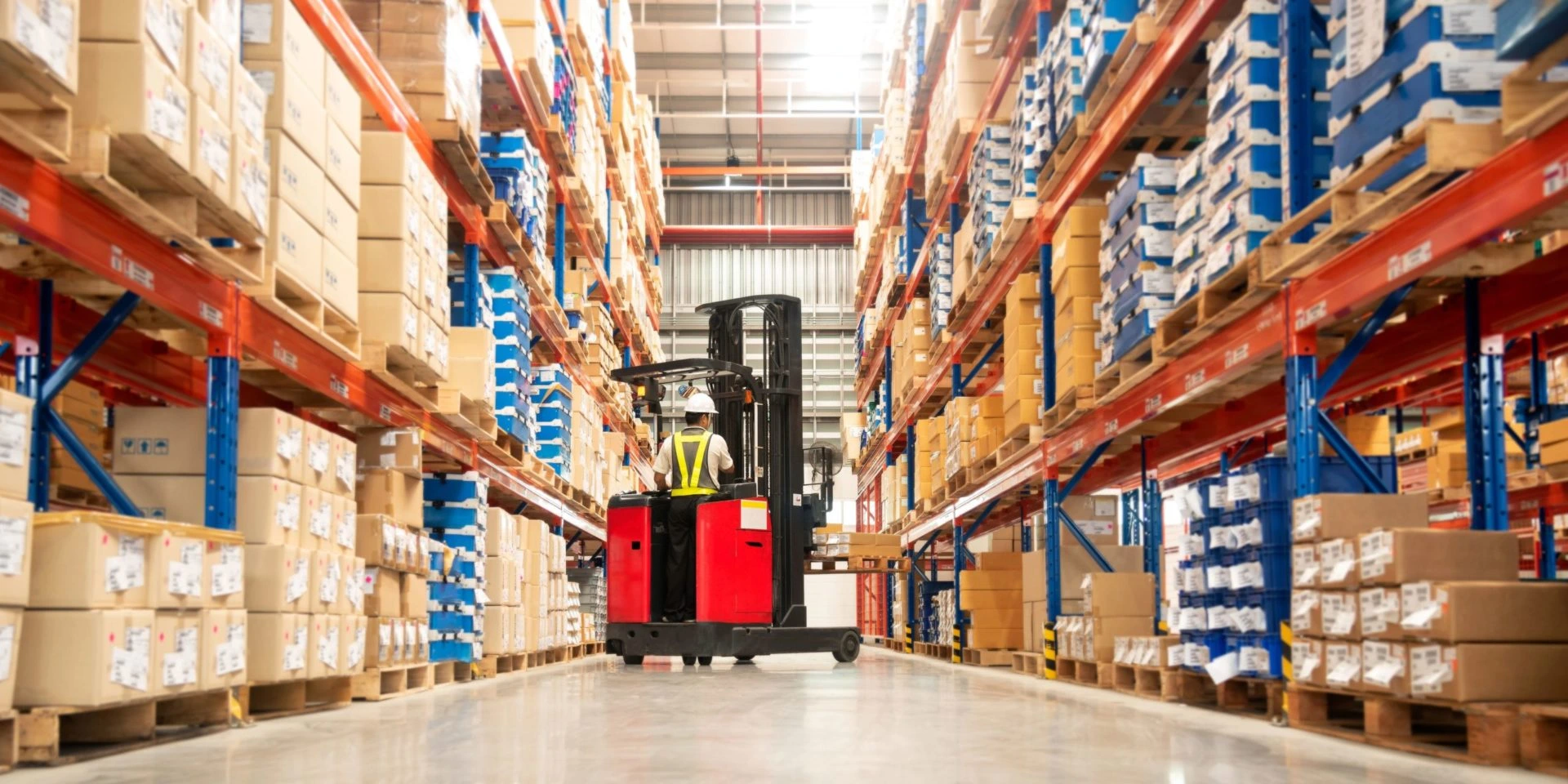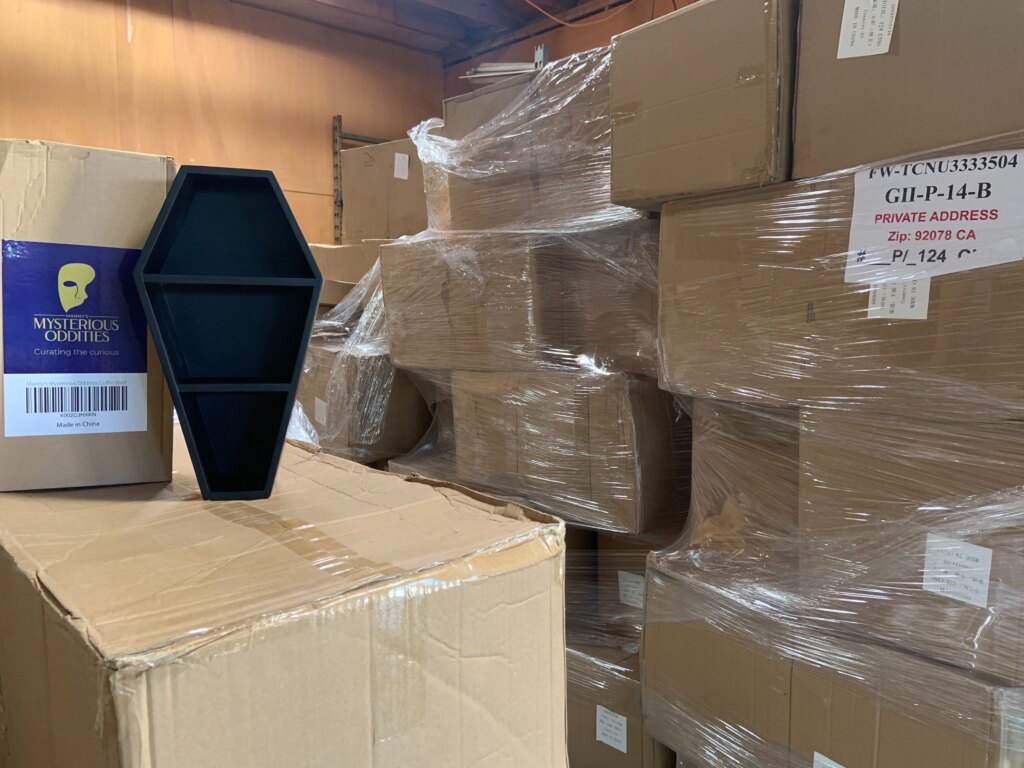
How to Manage Amazon’s Quantity Limits for New Products


Table of Contents
- Who was hit the hardest with this announcement?
- ACTION ITEM 1: When You Run Out Of Stock
- Here’s why
- ACTION ITEM 2: Don’t Try To Cheat The System!
- ACTION ITEM 3: Using a 3PL Warehouse or Your Own Home / Office
- How would that work?
- ACTION ITEM 4: Don’t Panic!
- Frequently Asked Questions
A couple months ago we reported one of the most impactful Amazon announcements in recent memory. Through the end of the year, Amazon is most likely putting inventory quantity limits on many ASINs.
Some of you will not feel the effect as the limit can total 3 months (or more) of inventory. But for others, the inventory limits are less, and for new products (or those that have been dormant for a time), the limit is just 200.
Let’s talk about how this has been affecting sellers, and more importantly discuss ways that you might take action to weather the potential storm.
Who was hit the hardest with this announcement?
Amazon’s answer is that anyone who was planning on launching a product in the next 5 months will be affected. That’s a significant number of sellers.
You will be limited initially to sending in a total of 200 units. In addition, all those who send their inventory directly to the Amazon warehouse from their factory, and whose minimum order quantities (MOQs) are more than their new limitations, will also need to make other arrangements.
I have been analyzing these limitations over the last couple of weeks to try to decipher how Amazon calculates the limits. I’m sure that if I really dove into the numbers I could come up with a formula for how they calculate it, but at face value it doesn’t make much sense.
For example, on their restock report where they show the new limitations, the only sales data that’s visible is for the previous 30 days. From that, one could surmise that the inventory limitation would be based on this figure. However it’s not a direct formula.
In one of my case study accounts, three products seemed to have ratios very close to each other. The limitation on inventory was equal to 3.1 – 3.3 months worth of inventory, however, 3 weeks later, it was only 2.8 months worth of inventory.
Other case study accounts had products allowing them to send in up to 4 months worth of inventory based on the previous 30 days inventory. At first, it seemed that a higher Inventory Performance Index (IPI) score allowed you to send more products in. However, one account was allowed to send in over 3 months worth of inventory despite having a dismal score of under 400.
Some have speculated that instead of 30 days sales velocity, Amazon is calculating 90 days sales velocity. I found many products where that formula was not even close to what Amazon put as the limitation.
ACTION ITEM 1: When You Run Out Of Stock
What if you have a good selling item, but you run out of stock and could possibly be out of stock for a few weeks? First of all, it sounds like you are a candidate for Helium 10’s Inventory Management tool that is coming soon. But secondly, I suggest that you create an FBA replenishment shipment (for the allowable amount) as of the day you are fully out.
Here’s why
It does not seem that Amazon consistently looks at historical numbers to set your max inventory quantity on items that are out of stock. For example, with the Project X Coffin Shelf, it was out of stock for weeks leading up to July 13. As of July 29, our max inventory level is 1228, and this is despite the previous 30 days sales history being only 38 units due to it just coming back into stock!
In this case, it seems to be referring back to our May sales velocity.
At first I thought that the coffin shelf had possibly maintained a high inventory limit due to us closing the listing. However, we have another case study product which had just ran out of stock a few weeks ago and also had the listing closed. On July 13, when this limitation was just announced, it had a previous 30 day sales of 298. The inventory limitation as of that day was 987, or about 3.3 months worth of inventory as of that day.
I checked it again on July 22, after it had been out of stock another 9 days and the new 30 day sales total was 239. The max inventory limitation had dropped to 804 units. A week later on July 29, the sales showed only 166 units after another week had passed with zero sales, and the replenishment had now dipped to 462 units. HALF of what it was just 2 weeks ago!
Because of that, and as I am writing this, I have gone ahead and created a shipment of 400 units, just in case it dipped further before my order arrives from China to my warehouse in a couple of weeks.
ACTION ITEM 2: Don’t Try To Cheat The System!
As soon as the announcement was made, many Facebook groups were inundated with freelancers who said they could get around the inventory restrictions. What many were doing was creating multiple shipments in multiple tabs in Chrome, then trying to click all of the create shipment buttons at almost the same time to be able to go over the limit.
I never recommend short term hacks like this, especially when it’s obviously contrary to what Amazon is trying to accomplish.
I heard that some who did this ended up getting their listings suspended for it. Even if there is only a 10% chance that you get your listing suspended, it’s something that I do not think is worth the risk. Others have tried doing lots of artificial orders to an FBM offering on an ASIN, thinking it would increase their FBA offer limitations. I have not heard of this working since Amazon is only supposedly considering the sales velocity of the actual FBA listing. Those who tried that technique have lost hundreds of dollars without any benefit.
ACTION ITEM 3: Using a 3PL Warehouse or Your Own Home / Office
Regardless of whether you have an established listing where you need to order more than your inventory limitation, or if you have a new product launch and have the limitation of 200 units, the answer to this issue might be using a 3PL Warehouse. Many did exactly this when similar inventory limitations were imposed during the COVID FBA warehouse slowdown.
How would that work?
You have two options. One option is to set up a shipment of 200 items and have it shipped directly to Amazon. Then, (if for example) your MOQ was 1000 units, you would send the other 800 units to a warehouse in the USA, or your own home or office. You would then trickle your inventory into Amazon with smaller replenishment orders.
You would not have to wait until the entire first 200 sell out. How that limitation works is that you can have a max 200 in the pipeline. This includes inventory on the way to Amazon, and on the way to customers, and in process in Amazon’s system. Let’s say you sell 100 items, and they are all shipped out and delivered….you would now be able to send in a replenishment order of 100 units so that you have a total of 200 in the pipeline. (100 already in FBA, and 100 on the way).
This is where things might get tricky in finding a 3PL warehouse if you are a smaller seller. Refael Ebaz, from Unicargo said, “3PL has costs, for inbound (receiving your cargo), storage (storing the cargo), and outbound (getting the cargo ready to be shipped out of the warehouse). Doing so many actions (and incurring the costs) on a total of 10-20 cartons is too much of a hassle.”
He continues, “Think about it: the warehouse will get an email saying, “Hi, I need to ship 2 boxes to Amazon,” that will ultimately require taking the boxes off of the pallet, UPS labeling them, sending them out, sending an email back to client with tracking labels, answering questions, then getting yelled at for the delay. All for an invoice of $10 for the 2 cartons that were sent out.”
This is a real issue if you only have one product you’re launching and do not have a history with a 3PL warehouse. The warehouse that we used in Project X was Kreassive. They helped us out with our order of 500 units, and were ok with sending shipments about 100-200 at a time to Amazon. Will companies like that want to be sending in replenishment orders for sellers though, 50 units at a time? It’s doubtful since they would lose money on such small transactions. You could always try to get quotes from companies like them just to be 100% sure. Let us know in your comments below, what they say.
If the 3PL warehouses you find do not want to deal with smaller orders, what are your options?
You could have the inventory sent to your house as long as you have the means to store it in your garage or living room! Keep in mind that there are surcharges for residential deliveries, and you will have to carry the boxes into your house yourself since most delivery trucks will just drop the product off in pallets.
This inventory limitation is not slowing down Project X, nor any of the other case studies I am working on, since I have a large warehouse behind my house. Even under normal FBA circumstances I always have the inventory come to my warehouse first so that I can keep better control over the inventory in Amazon and not pay storage charges.
Just last week, I received a delivery of 2000 of the coffin shelves.

If you don’t live in the USA, this is obviously not an option. You would need to go the 3PL route. Another advantage of 3PL or home storage is that you now would be able to have the option to dual-list your product with an accompanying FBM offering. This way, even if your replenishment shipments get delayed, and you run out of your FBA offering, your listing will stay active with your FBM offer.
ACTION ITEM 4: Don’t Panic!
Is this new inventory restriction….restrictive?
Of course it is. But it’s not the end of the world. As outlined above, there are a number of ways that you can manage this situation. You do need to be careful though and count the costs. Adding storage at a 3PL will eat into your profit margins. Make sure that it still makes sense to launch the product that you planned to. Use the Profitability Calculator to make sure that you would still be profitable.
Now that you might be using a 3PL, it could be time to look into opening up to other marketplaces as well such as Shopify, Walmart, Wayfair or others. Look out for future articles on getting Project X set up in other marketplaces!
We are continuing to monitor the situation to see what kind of thresholds will increase the limits, and we want to know what other insights you sellers have to share.
How are you managing this situation? Do you have any tips that we didn’t mention? Have you cracked the formula on how Amazon determines the limits?
Let us know in the comments below your wins and losses during this time!
Frequently Asked Questions
Achieve More Results in Less Time
Accelerate the Growth of Your Business, Brand or Agency
Maximize your results and drive success faster with Helium 10’s full suite of Amazon and Walmart solutions.